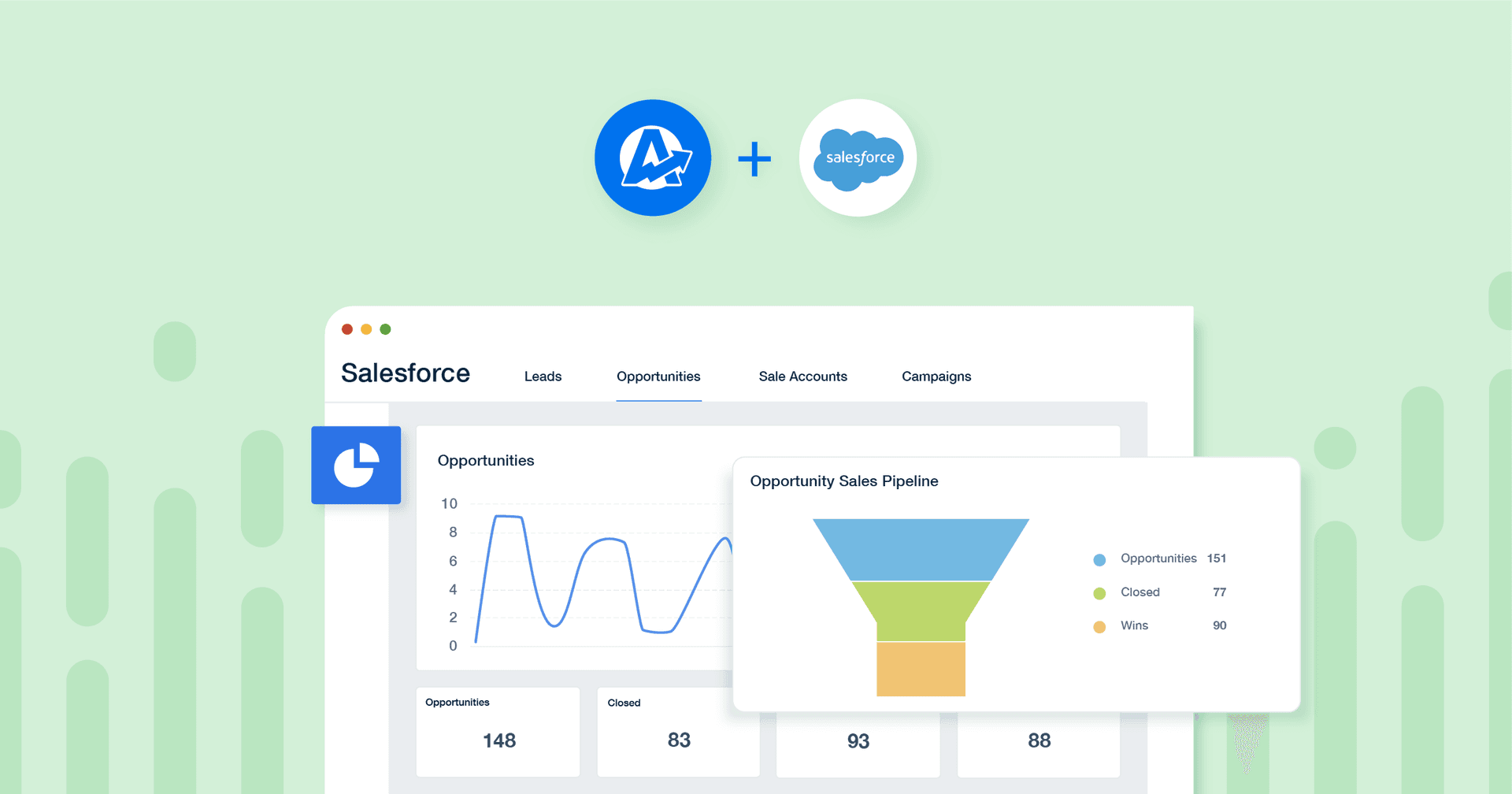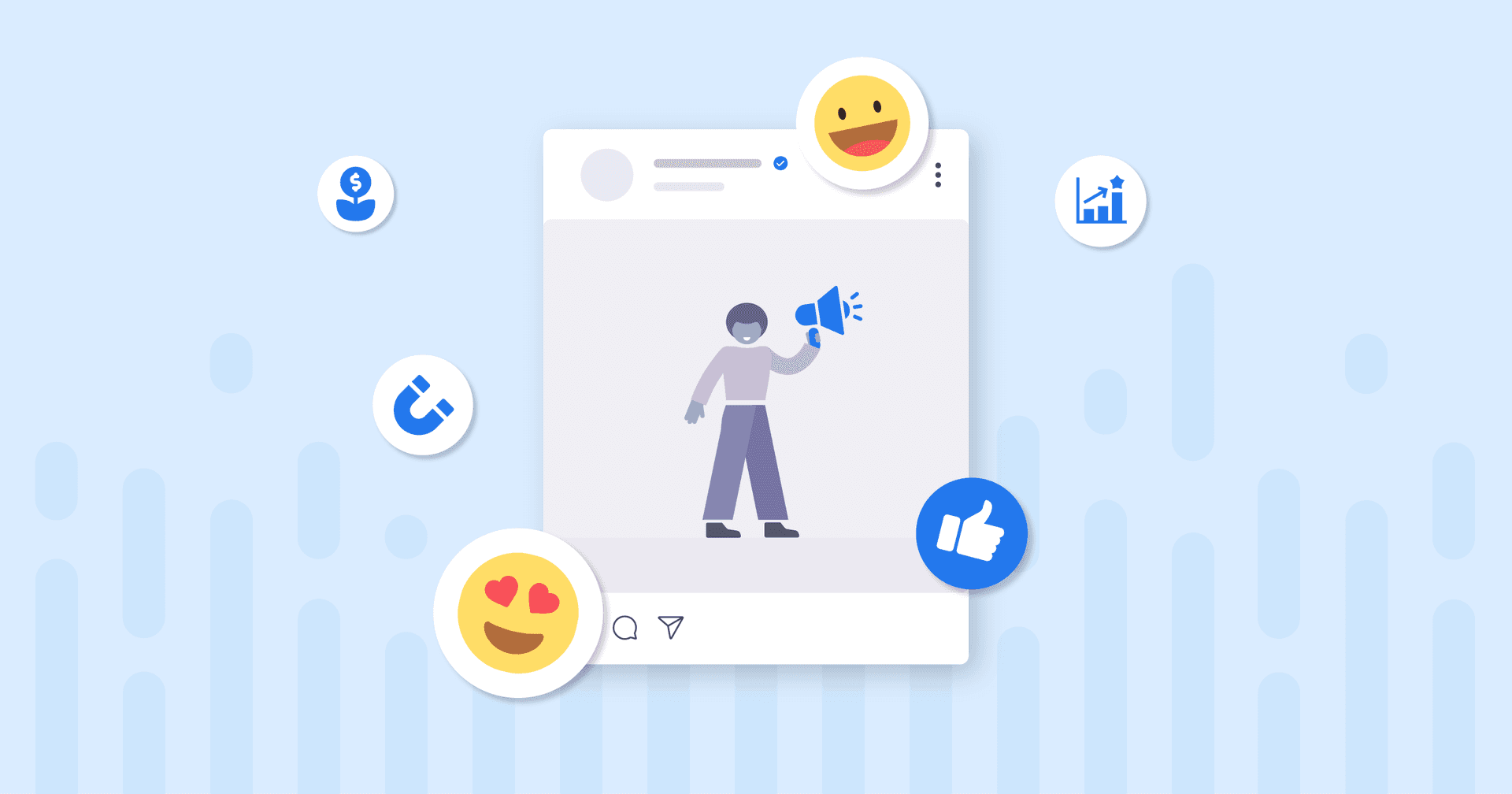Table of Contents
Table of Contents
- What To Do in Your Clients’ B2B Marketing Strategy (And What Not To)
- 9 Considerations for Creating the Right B2B Buyer Persona
- Understanding the B2B Buyer Journey
- 15 B2B Marketing Metrics To Measure Success
- 5 B2B Campaigns To Inspire You
- White Label Dashboard: A New Standard of Professionalism
- What Makes a Winning B2B Strategy: Key Takeaways
7,000+ agencies have ditched manual reports. You can too.
Free 14-Day TrialQUICK SUMMARY:
B2B marketing strategies blend logical and emotional appeals to build impactful campaigns. This guide shares effective B2B marketing tactics and how important it is to understand the B2B target customer's motivations, including the power of storytelling and visual elements. Learn all about successful campaigns and discover actionable insights for refining a B2B marketing strategy.
As an agency, your approach to a B2B marketing strategy might come from the assumption that B2B marketing efforts have to be more logically driven, in-depth, and professional, while B2C gets to be more fun, exciting, and emotional.
But is that really true, or is your agency missing the point?
While it’s true that in B2B, your clients’ customers are buying on behalf of a business, this degree of separation needn’t translate to a stuffy and buttoned-down marketing campaign. We’re here to argue that it pays to be bold.
We’ll prove it with examples as we take a deep dive into winning B2B online marketing strategies agencies can adopt, and spotlight a few of the best B2B campaigns in recent memory. Afterward, we’ll break them down and identify key takeaways you can use in your clients’ next B2B marketing strategies.
What To Do in Your Clients’ B2B Marketing Strategy (And What Not To)
Experts agree that one of the biggest mistakes agencies make is treating B2B marketing as a completely separate beast from business-to-consumer marketing efforts.
Here are a few of the most common assumptions marketers and agencies make about B2B customers, according to Hubspot:
B2B customers are more logical than emotionally driven
B2B customers are focused on ROI and efficiency
If your agency creates buyer personas based on mistaken assumptions like those, your campaigns may be overly reliant on product features and excessive jargon, which makes for uninspiring campaigns that flop.
In fact, a recent study showed that 75% of B2B ads are ineffective! Why? Because they lack emotion, creativity, and any form of storytelling–the kind of human elements that increase relatability, keep people engaged, and hit on a deeper level. This is particularly true given research that suggests 95% of purchasing decisions are subconscious!
After all, you’re not targeting emotionless robots–you’re targeting the people (with feelings) behind a business.
What To Do Instead
First and foremost, you need to be memorable, whether it’s through striking visuals, emotional storytelling, a catchy tagline, or (hopefully) a combination of all three–your clients need to stand out and be memorable.
So whatever you do, make sure that your messaging and call-to-action are cohesive and crystal clear.
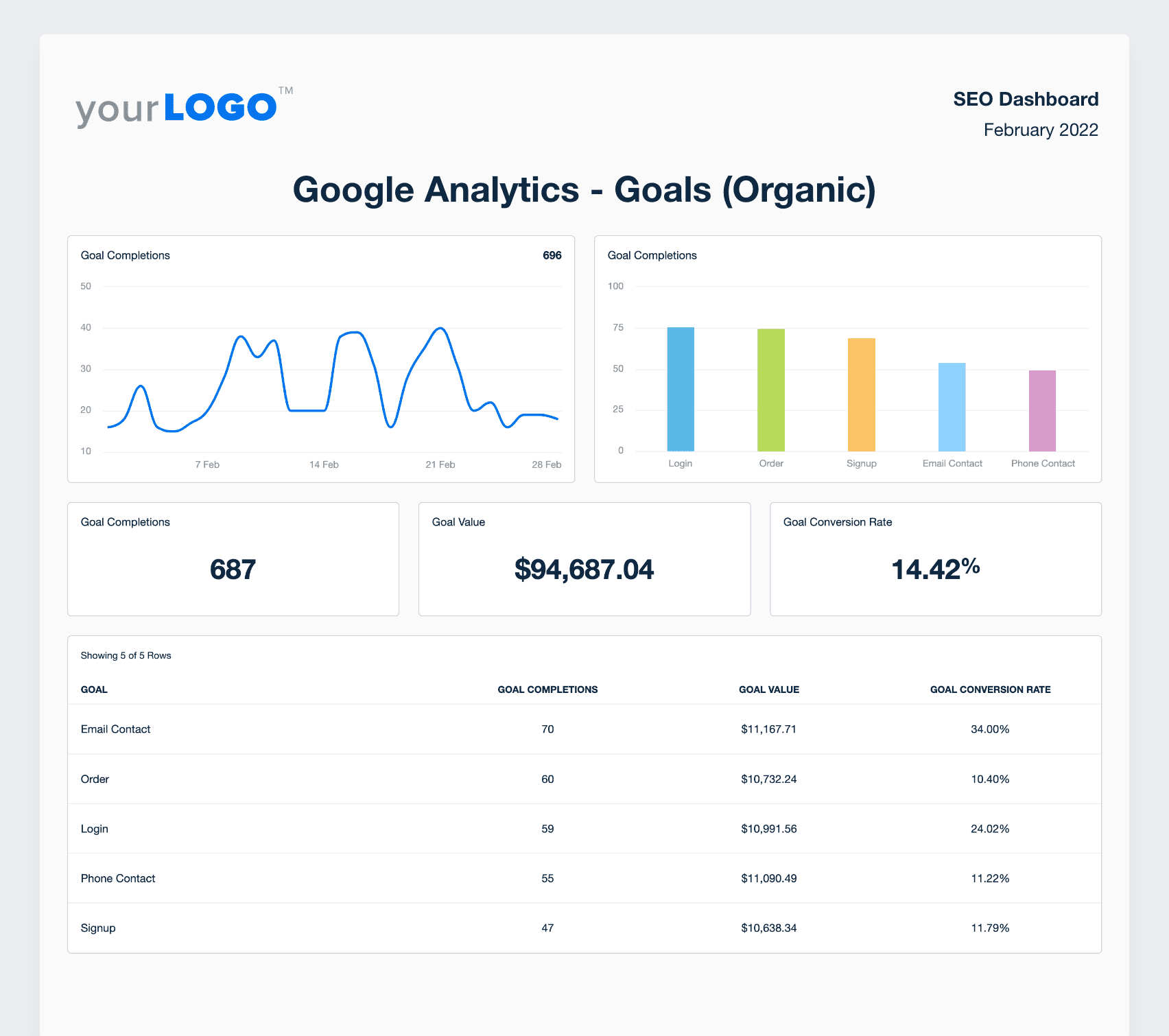
Show your business to business clients that their customers are converting in an easy-to-understand report. Start your 14-day free trial today.
9 Considerations for Creating the Right B2B Buyer Persona
In order for your B2B online marketing strategies to reach and engage the right customer for your clients, it’s important to create a buyer persona for who you are trying to reach. This is different from your ideal customer profile (ICP) because the buyer persona is a semi-fictional representation of your ICP. While the ICP describes the type of company your B2B campaign is targeting, the buyer persona targets the people behind the company who would be buying from you.
Here are nine things your agency should include in your B2B Buyer Persona:
1. Firmographics
How long have they been in business? Where are they located? What industry are they in? What is their annual revenue? How many employees do they have? How large is their current customer base? This will help set the tone and understand the growing needs of your clients’ potential customers at a business level.
2. Technographics
Technographics allows your agency to segment for the type of technology solutions a business uses. This is helpful to identify which account to target by considering the tech solutions they already use, as well as their adoption rates. Take CRM software, for instance: if your client has a HubSpot integration but not a Salesforce integration, you would want to target companies with HubSpot integration.
3. Competitors
Pinpoint their competitors and what they will need to stand out. Who are their direct and indirect competitors in the market?
4. Internal Influencers
Who within the company is likely to recommend new products or services that can improve their business? For example, an Account Executive may not have the authority to purchase a digital marketing dashboard for their agency, but they could be someone who recommends a way to streamline the tedious manual reporting processes with automated reporting tools.
5. Decision Makers
These are the people who have the power to say yes. In smaller companies, they are often the same as the influencers, but in larger organizations, they can be the people who control the purse strings but aren’t as involved in the day-to-day execution of the business processes.
6. Pain Points
Now for the attention-grabber that will help your messaging: what problems does your potential customer have that your client’s product or service can solve?
7. Media Consumption
Where does your target customer go for trusted information? This can include search engines, digital journals, social media channels, conferences, etc. Understanding where they consume their media is especially important for different marketing attribution models. This is because your agency needs to show your clients exactly where their leads are converting.
8. Objections
Have they been burned by other products or services that are similar to your client’s in the past? Are there common objections within the Influencer and Decision Maker groups that you need to overcome as quickly as possible?
9. Business Mode
Is the business poised for growth, looking to maintain its current revenue, or is the business in a declining market? As surprising as it may seem to most marketers, not every business out there wants to grow. Some are quite happy with their current revenue and simply want to streamline processes to make their life easier or increase their bottom line.
The general rule of thumb is that if you try to be all things to all people, you will most often end up meaning nothing to everyone.
By better understanding your client’s ideal customer, not only can you fine-tune your targeting to get in front of the right prospects, but you can also focus your messaging in a way that will resonate best with the target buyer.
Keep in mind, of course, that by focusing on their ICP (Ideal Customer Profile), you are not necessarily excluding others who might find the offer enticing. Those who might fall outside of the target group could still find your client’s product or service to be the best thing since sliced bread.
Understanding the B2B Buyer Journey
Here is what a typical B2B Buyer Journey might look like:
Awareness: “There’s a problem, and something must be done!”
Solution Exploration: “What are our options?”
Requirements building: “What do we need it to do?”
Comparison: “Who best fits all of our requirements?”
Consensus Building: “Getting everyone onboard.”
Decision: “Should we invest in this?”
At the same time, it’s important for agencies to keep in mind that the B2B buyer journey is ever-evolving, and it’s critical to adapt to the new realities.
3 Things Every Agency Should Consider in Their B2B Marketing Strategies:
1. Agencies have less time and opportunities to influence B2B buyers.
2. B2B buyers do lots of independent research, making them highly knowledgeable.
3. The buying journey for business customers is more complex and challenging than ever.
When considering a purchase, B2B buyers only spend 17% of that time meeting potential suppliers like your B2B clients. That’s because they’re spending 45% of their time doing independent research instead, which ties into why B2B buyers are so well-informed these days.
Major Pain Points for B2B Buyers
Ask anybody that does B2B purchasing, and they’ll tell you that their jobs have gotten harder, as 77% of B2B buyers said their last purchase was very complex and difficult.
Here are some of their biggest pain points:
Getting multiple decision-makers onboard
There are too many options to choose from
Remember when we said earlier that B2B buyers spend the majority of their time on research and info gathering on search engines? That could be a huge opportunity if you reach those B2B buyers while they’re conducting it.
One of the best ways to do that is with a content marketing strategy that understands the buyer’s journey and provides helpful information to guide them through the process. Effectively, you’re helping to whittle down their other options until all that’s left is your client. This means creating a top-notch search engine optimization strategy to get your clients' websites ranking high in the SERPs.
15 B2B Marketing Metrics To Measure Success
To make sure that you’re focusing on the right metrics, there are 15 crucial B2B marketing metrics that help your agency measure the success of your campaigns:
1. Impressions
Impression can be considered a bit of a vanity metric, but it’s important to remember that every time your client’s brand appears in front of the right audience, it is an opportunity to increase your client’s brand awareness and reinforce their position as a leader in their niche.
2. Website Visits/Clicks
Website traffic provides insights into how well your client’s website is being found, either through your paid or organic efforts. By understanding the growth patterns of the website, and how users are engaging with the content provided, you can gain a better understanding of the effectiveness of your agency's B2B marketing strategies.
3. Marketing Qualified Leads (MQLs)
Marketing Qualified Leads are usually those users who have shown a level of interest in your client’s product or service and are ready for marketing messages. Perhaps they have subscribed to a newsletter, downloaded a whitepaper, or registered for a webinar. Although these leads may not be ready to hand off to the sales team quite yet, they are an indication that the prospect has raised their hand and effectively asked for more information.
4. Sales Qualified Leads (SQLs)
The next step in the typical B2B buyer journey is Sales Qualified Leads. These folks have taken certain actions that would indicate they are ready to talk with the sales team. This can be determined by a variety of factors, including lead behavior and scoring, as well as whether or not the prospect has the authority to complete the purchase. As B2B marketers, you always want to make sure that the sales team is talking with the person who has the authority to say yes.
5. Product Qualified Leads (PQLs)
This metric is most often implemented in a Product-Led SaaS company, where users have the chance to try the product before they buy. Many companies define a Product Qualified Lead as someone who has signed up for a Free Trial or Freemium version of your client’s product. However, the best practice is to take it one step further and make sure that the prospect has actually engaged with the product enough to have received some early value.
6. Net Email List Growth
Email marketing continues to be one of the most powerful marketing agency tools in your arsenal. Users will subscribe through various acquisition programs and unsubscribe if they don’t find the content of value to their business.
That’s why understanding net growth within their email marketing campaign is important, as it measures both additions and removals from the contact database. This is especially the case as the list size increases because even a small email churn percentage can offset new subscribers once a list reaches a certain size.
7. Social Media Growth & Engagement
As a marketing agency, you always want to show growth. B2B campaigns that foster an ever-increasing amount of social media engagement help continue the upward growth trajectory with the potential for new lead generation.
Be sure to consider the power of online referrals and testimonials and use these to craft a strong business to business marketing strategy. Referral marketing is a great way to get business owners to talk about your clients' products or services.
8. Visit-to-Lead Conversion Rates
You’ve probably heard the old saying, “You can lead a horse to water, but you can’t make it drink.” As a digital marketing agency, you need to do both. If you notice conversion metrics like their visit to lead conversion rates are too low, you are likely either bringing the wrong type of user to the website, you are doing so with the wrong message, or your website is not providing the pay-off that the user expected.
9. Cost Per Lead
Understanding how much your client is willing to pay for lead generation (based on average close rates and customer value) helps guide your campaigns. However, cost per lead on its own can be an ineffective measurement tool, as any agency can find ways to drive cheap leads that don't convert. If that happens, then the cost per lead targets will drop dramatically and cause more frustration for your client’s sales team.
10. Sales Conversion Rates
Whether your client is running a self-service model or a sales-led model, if you don’t understand the conversion rate, you are missing one of the most important metrics.
11. CAC (Customer Acquisition Cost)
One of the least ambiguous metrics in the digital marketing world, this number–which simply divides the amount spent by the number of new customers driven–is a guiding principle for campaign success.
12. ROAS (Return on Ad Spend)
Taking the above metric one step further, this number also incorporates how much the customer spent. ROAS is most often expressed in a percentage (e.g. 200%) or a multiplier (2.0x) format. However, to understand how your agency is performing against this metric, it’s important to understand your client’s expectations. Are they willing to take a loss on the customer’s initial order because of the potential lifetime value? Or do they need to be profitable on that client acquisition immediately?
13. ARPU or AOV
Both of these measure how much the average customer spends with your client. ARPU is often defined in two ways, Average Revenue Per Unit or Average Revenue Per User, and is commonly used in SaaS businesses. Quite simply, it takes the company’s total revenue and divides it by the number of subscribers. AOV (Average Order Value) is used in eCommerce shopping as it focuses on each transaction. Both of these metrics will give your agency a sense of how much your client’s potential customers are willing to spend.
14. Revenue or MRR (Monthly Recurring Revenue)
Of course, all of the above lead to the end goal of revenue. For a business with a subscription model, that is typically expressed as MRR to highlight how much revenue the business expects each and every month (assuming none of the current customers churn out). For transactional businesses, this is pure revenue generated in a specific period. However, there can be variations on whether or not your client tracks gross revenue or net revenue (removing cancellations, voids, and returns).
Agency Tip: Because your marketing agency generally has minimal impact on your clients' customer service and fulfillment practices, creating their marketing plan around Gross Revenue is best. You don't want stock availability, delivery issues, or product defects to impact your agency's perceived performance.
15. Customer Lifetime Value
The end-all and be-all of digital marketing metrics, this number represents how much a typical customer will spend with your client during their lifespan. This number can take years to fully understand, but there are ways to project the lifetime value based on key indicators such as reorder rate, brand loyalty, and churn percentage. Understanding your client’s customer LTV can help you guide some of the acceptable cost per acquisition if your client is willing to invest in the long-term growth of their business.
Now that we’ve got a better idea of the do’s and don’ts of B2B marketing strategies, let’s take a look at some real-world examples.
5 B2B Campaigns To Inspire You
Need some inspiration for your next B2B marketing campaign? Here are some examples of the best B2B marketing strategies which have garnered attention–and awards–for their unique approach.
1. Wistia Studios: SaaS B2B Marketing Category
Wistia’s in-house digital marketing team created a four-part documentary called ‘One, Ten, One Hundred’, which was nominated for a Webby People’s Voice Award. The show is about an LA-based production company that has to develop three videos at three very different price points: $1,000, $10,000, and $100,000.
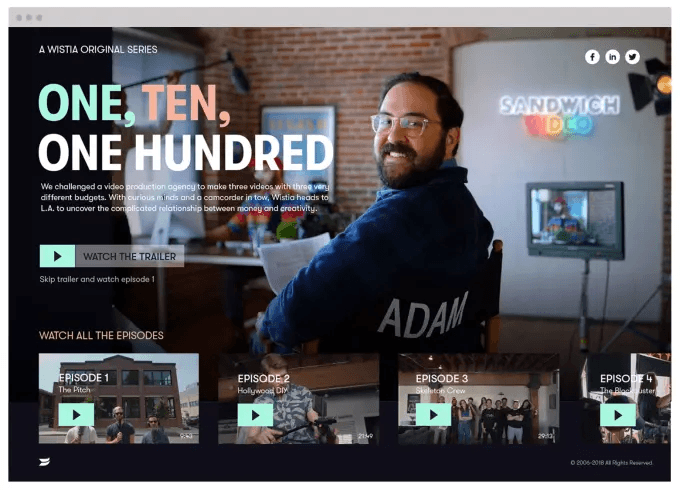
Why Is It successful?
For starters, it is actually entertaining! And then there’s the money factor. When there’s a challenge involved, not only is there the element of surprise, but also friendly competition. And nothing says friendly competition like digital marketing.
Wistia is a B2B video platform: challenging a local video-production business to create videos not only generated fantastic educational content that they can continue sharing with thousands of potential customers, but it also served as excellent self-promotion. Two birds, meet stone.
2. The HOW Channel: Winner of Best Content Marketing Campaign
The ‘Best Content Marketing Campaign’ award went to the agency Publicis Sapient for its work on the HOW Channel, a streaming platform that delivers business insights in video form in under 10 minutes.
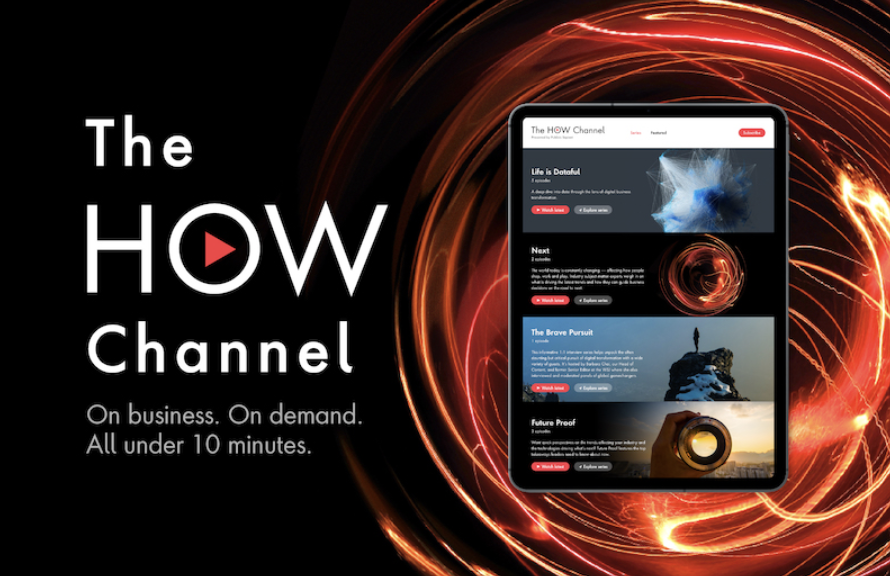
The idea was born during the pandemic as Publicis Sapient sought new ways to deliver value to clients in the era of social distancing and working from home, and the goals were threefold– make humanized content that’s relatable and easy to digest, all the while providing a great user experience.
Why Is It successful?
The HOW Channel front page is beautifully designed, highly interactive, and features eye-catching visuals. The website navigation is minimalistic yet easy to use with an intuitive user interface that will have anyone familiar with streaming services like Netflix feeling right at home.
But the most important part is the content, and it really shines with its carefully designed content taxonomy that organizes and displays their content in appealing categories such as their 7-part “Insights” series and 9-part “The Digital Life Index”.
3. Caring Is Your Calling: Winner of Grand Prix and ‘Best Response to Change’ Award
The “Caring is Your Calling” campaign won the coveted Grand Prix and Best Response to Change awards at the 2021 Drum Awards for B2B. Created by the agency Mower for the Iroquois Healthcare Association, “Caring is Your Calling” was a recruitment campaign for long-term care workers in the New York area.

When everything changed after COVID hit, the need for healthcare workers became more urgent than ever. The Mower team was forced to pivot and adapt their message in the wake of COVID, and they deftly rose to the challenge with a design concept inspired by recruitment posters from World War I and II (think Rosie the Riveter) and a new tagline of “Caring is Your Calling”.
The campaign was a resounding success, bringing in 700,000 unique visitors to their client’s website– a 7 times increase over the previous year!
Why Is It successful?
Not only does the “Caring is Your Calling” campaign uses powerful imagery, but the phrase itself is also designed to elicit an emotional response and speaks directly to their target audience. What makes the tagline even stronger is its catchy use of alliteration, which helps it stick in your head.
The powerful visuals were also complemented by a story-driven series of video ads, which got it a lot of attention as one of the year’s best omnichannel marketing campaigns as well.
4. GE Reports: When Thought Leadership and Storytelling Go Viral
The next example is from General Electric. Also known as GE, it’s known around the world, having been in business for almost 130 years!

Despite how old it is, GE continues to innovate, and GE Reports is a great example of how it upped its content to the next level through engaging storytelling and thought leadership, primarily through in-depth, long-form content. Within eight years, GE Reports has amassed over 100,000 email subscribers and approximately 3.7 million visits per month!
Why Is It successful?
The foundation of GE Report’s success rests on its commitment to old-school journalistic reporting and in-person interviews, which allows them to create interesting content that you won’t find anywhere else because they’ve actually gone out and done the research themselves.
The majority of the value from this content marketing strategy, as GE Reports, is more about telling great stories than promoting GE.
In most cases, the brand has a more tangential connection to the narrative instead of being the main focus, such as this recent story about how frontline healthcare workers have been using GE’s ultrasound machines to save lives.
By telling interesting stories that focus on their customers, technology, and employees, GE Reports has gone viral numerous times on social media platforms like Reddit.
As Tomas Kellner, chief storyteller at GE, said:
When you work on a story, it's your duty to bring in some new insights that your audience doesn't know, something they can walk away with. By going longer and tackling more complicated subjects, you are rewarding them for their time on your site.
5. Dropbox: B2B Social Media Campaign
Sometimes a little goes a long way. Dropbox empowers their own employees’ stories and posts them on their LinkedIn channel using the hashtag #LifeInsideDropbox. They also have great content marketing strategies that include resharing their employees’ relevant content often, aside from highlighting their own product and company updates.

Why Is It successful?
Being enthusiastic about your own employees’ successes and highlighting what they like about the company they work for enforces their brand image and makes people want to work with–or for–them. This takes on a human approach to digital marketing, which is ultimately what B2B social media marketing is all about.
Inspired yet? Read more: Best Digital Marketing Awards To Get On Your Agency’s Radar.
B2B agencies are held to high standards and must consistently deliver quality content. That’s where white labeling comes into play.
White Label Dashboard: A New Standard of Professionalism
B2B digital marketing strategies are at another level compared to B2C, as B2B clients are often pickier and more discerning. The stakes are also higher, and that’s why professionalism and consistency are of the utmost importance in the B2B space.
Your clients also want to look like experts in their field, and if your agency can provide them with the metrics to prove it, you’ll always be in their good books.
That’s why many agencies use a white label dashboard to create a seamless professional experience for their clients. Effortlessly add your agency’s logo, branding, and clients’ brand colors for a personalized and fully polished experience to show off successes and identify areas of opportunity.
What Makes a Winning B2B Strategy: Key Takeaways
Whenever possible, you should try to identify both the ideal profile of the business and the person (or people) within that business who would be the influencers and decision-makers.
So what did these B2B digital marketing campaigns all have in common? Drumroll, please.
Understanding the motivations of the B2B target customer
Striking visuals
Storytelling
Emotional appeals
Mixed media
Understanding the buyer journey
Paying attention to the critical B2B funnel metrics
These campaigns also really emphasized the importance of omnichannel campaigns that can seamlessly jump from the blog page to the video screen to social media channels, which requires a strong core message or idea.
Add in a high degree of interactivity with a keen awareness of user experience and relevant content, and you’ve got the starting pieces for an amazing B2B marketing campaign of your own. You can even differentiate your B2B strategies based on your intended channel, branching out to B2B social media marketing strategies (possibly testing out influencer marketing if it suits your client's industry), PPC, and so forth. But that’s for another article.
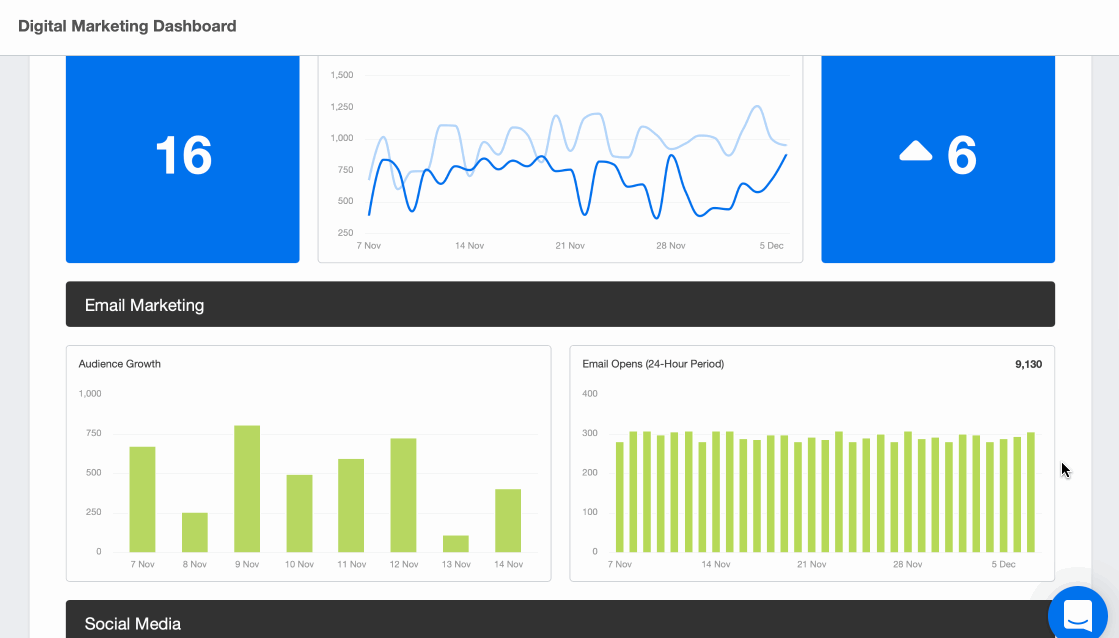
So what are you waiting for? Show off your agency's marketing efforts in a dashboard highlighting your clients' B2B marketing KPIs. Get started with your 14-day free trial.

Written by
Michael is a Vancouver-based writer with over a decades’ experience in digital marketing. He specializes in distilling complex topics into relatable and engaging content.
Read more posts by Michael OkadaSee how 7,000+ marketing agencies help clients win
Free 14-day trial. No credit card required.




